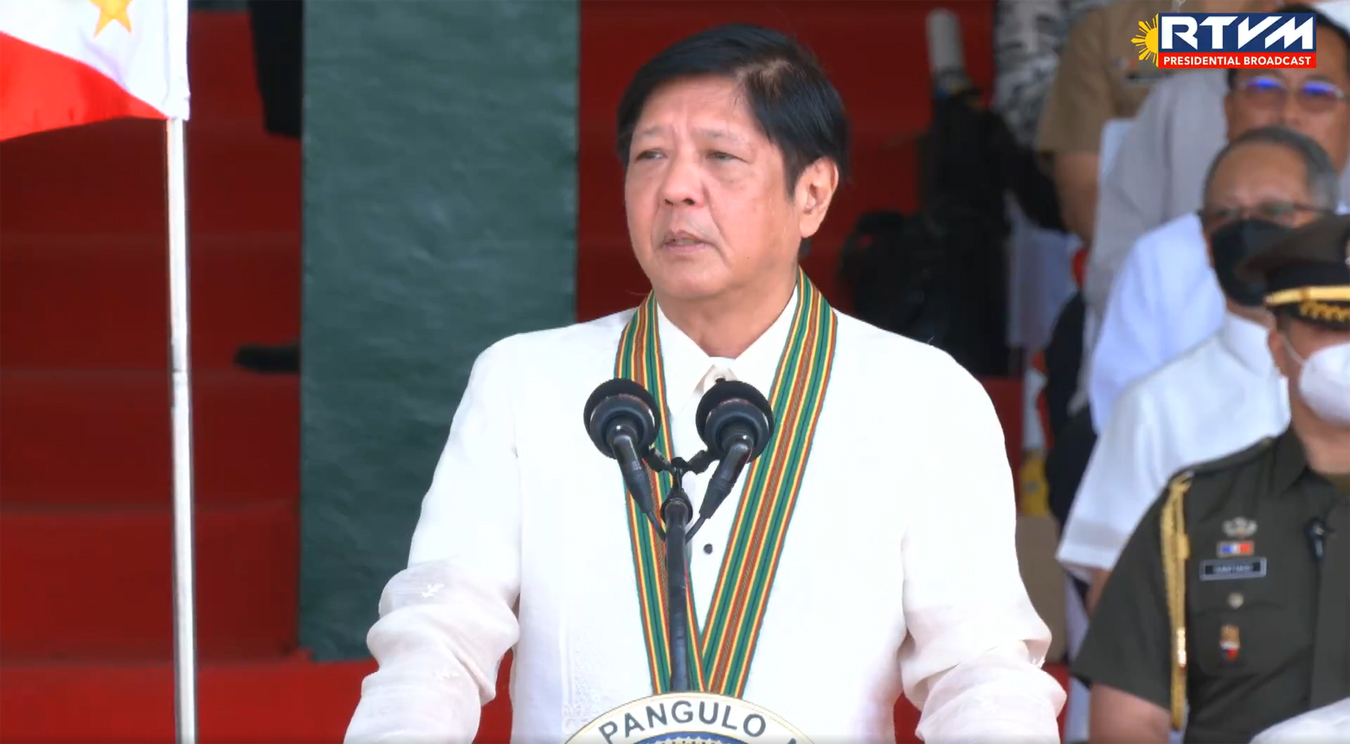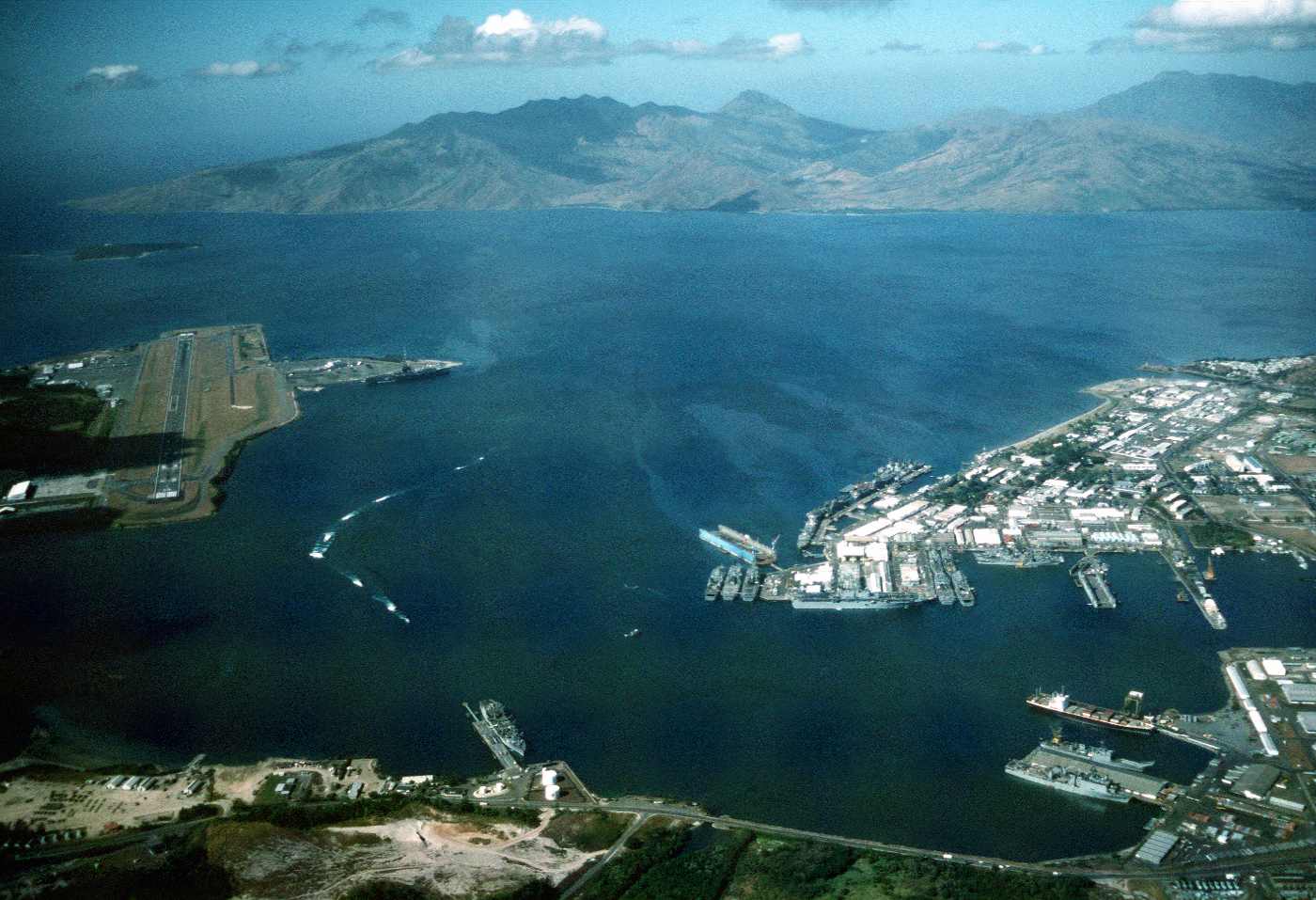Amidst Chinese criticism mounting over the American role in the South China Sea, Philippines President Ferdinand Marcos Jr announced that four new military bases under a defense agreement with the US would be scattered across the country, including one in a province overlooking Taiwan.
“There are four extra sites scattered around the Philippines — there are some in the North, there are some around Palawan, there is some further South,” Marcos told reporters on the sidelines of the Filipino army’s founding anniversary.
The announcement comes after one of the most advanced fighter jets of the US Air Force, the F-22 Raptor, exercised with the Philippines Air Force (PAF) earlier this week, making it the first time the top-notch jet had visited the nation.
The Filipino President further stated that his country and the US would reveal the locations of the bases soon, adding the sites would strengthen the country’s capabilities to protect the “eastern half” of its main island, Luzon.
The main Filipino island of Luzon is the closest to the self-ruled Taiwan, which China claims as its own.
Last month, amidst rising concern over China’s increasing assertiveness in the disputed South China Sea and tension over Taiwan, the US military managed to secure access to four additional bases in the Philippines.
This additional access exceeds the five facilities already available to the US under the 2014 Expanded Defense Cooperation Agreement (EDCA).

The EDCA grants the US access to Filipino bases for joint training, equipment pre-positioning, runways, fuel storage, and military housing installation.
This does not qualify as a permanent American military presence in the Philippines. China, nonetheless, sees the expansion of the US military presence in the Philippines as provocative.
For instance, right after the expansion deal was signed between Manila and Washington, the Chinese embassy in Manila responded angrily.
The Chinese embassy in Manila said, “The United States, out of its self-interest and zero-sum game mentality, continues to step up its military posture in this region. Its actions escalate regional tension and undermine regional peace and stability.”
The US had reportedly requested access to bases in Isabela, Zambales, and Cagayan, all on the island of Luzon and facing north towards Taiwan, as well as in Palawan in the Southwest, close to the contentious Spratly Islands in the South China Sea. This information was made public by a former Philippines military chief.
China, The US, And The Significance Of The Philippines
The spokesperson for the Chinese Embassy in Manila said in a statement released on March 12 that bundling the Philippines into the “chariots of geopolitical strife” will seriously harm Filipino national interests and endanger regional peace and stability.
Later, reports indicated that US Air Force Secretary Frank Kendall met the Philippines’ defense chief Carlito Galvez in the capital Manila. This has since triggered fierce criticism from China, which opposes the militarization of the country that is strategically located close to the South China Sea and the Taiwan Strait.
NOW: PH defense chief Carlito Galvez Jr., US Air Force Sec. Frank Kendall III, US Ambassador to the PH MaryKay Carlson, PH Air Force Acting CG MGen Ramon Guiang lead groundbreaking ceremony of Basa Air Base EDCA runway rehabilitation project. | via @biancadava pic.twitter.com/l1TSFSzy3n
— ABS-CBN News (@ABSCBNNews) March 20, 2023
Chen Xiangmiao, director of the World Navy Research Center at the National Institute for South China Sea Studies, told Global Times that these moves are part of US efforts to bolster its military presence near the Taiwan Straits, which will heighten tension in the region.
On one occasion, the Philippines’ ambassador to the United States, Jose Manuel Romualdez, stated that the Southeast Asian country would allow US forces to use its military installations in a conflict over Taiwan. However, he added the caveat that this would be done only if the security of Manila is endangered.
This is not the state’s official position.
For the US, the agreement will bolster its strategy of deploying smaller formations of soldiers throughout the Indo-Pacific, strengthening current alliances, and forging new ones to challenge China’s expanding influence in the region.

Further, China is not the only one against the expanding military presence of the US in the Philippines. Some local government officials in the areas where the EDCA could be built disagreed with Marcos’s decision. The underlying concern expressed by these politicians has been that they might get dragged into a conflict between the US and China over Taiwan.
But Marcos said his government has discussed the importance of the expanded US access and “why it will be good for their provinces.”
The five current locations—Antonio Bautista Air Base in Palawan, Basa Air Base in Pampanga, Fort Magsaysay in Nueva Ecija, Benito Ebuen Air Base in Cebu, and Lumbia Air Base in Mindanao—will get an infrastructure investment from Washington to the tune of US$80 million.
Speaking before Filipino troops, their president told them to be vigilant, as the external threat to security was becoming more “complex” and “unpredictable.”
He did not name the external threat openly. However, it has been widely known that China’s alleged intimidation of states with territorial disputes in the South China Sea has pushed this Southeast Asian country into the US tight grip in recent years.
- Contact the author at sakshi.tiwari9555 (at) gmail.com
- Follow EurAsian Times on Google News




